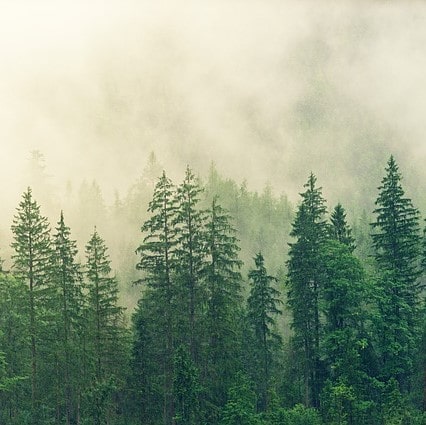A Summerhouse Built with FSC-certified Wood from Lesser Known Timber Species
It is an old Danish tradition to own a summerhouse and the Danes love it. For Kent Skovgaard, he took this aged-old tradition a notch above. Besides injecting a dose of Danish Hygge in his newly built summerhouse in Nordjylland, he used FSC-certified materials for the house named “Klubhuset” (literally translated as the clubhouse).
Building labour of love
When the time was ripe for Kent Skovgaard and his wife to search for a summerhouse, they wasted no time and immediately went looking for a house of their dreams in the same area as Kent’s parents’ summerhouse.
“We started looking in the area Erteboelle, but soon found most properties have insufficient insulation. Besides, these summerhouses require a substantial amount of renovations, which would increase our budget.”
“Then this idea sparked in my mind. Why don’t we buy land and build a summerhouse of our dreams?” shared Kent.
Kent who has spent the last 10 years working as the Director of NEPCon Certificering ApS (NEPCon legal entity in Denmark) decided not only to build his own summerhouse but also to use FSC-certified materials and to obtain FSC Project Certification.
FSC Project Certification is a project and site-specific. This type of FSC certification can be used for virtually any type of new build or refurbishment project, civil engineering projects, or events such as exhibitions and festivals. There are two options – Full or Partial Certification, depending on the percentage of FSC-certified timber use.
“At NEPCon, I advise companies to become FSC certified, so naturally, I need to heed my own advice, isn’t it?” quipped Kent with a hearty laugh.
When he brought his idea to a construction company, Kent received pessimistic feedback. “I was told that there are no suitable FSC-certified materials to carry out the project and it is impossible to get a family house certified, without compromising on quality and design. So, I decided to prove them wrong,” said Kent.
After settling on the design, Kent began searching for FSC-certified building materials. He then sought help from his 74-year-old father and friends to assist in the construction of the “Klubhuset”.
They started building the house in December 2018 and completed the construction in June 2019. The summerhouse consists of three bedrooms and one bathroom, kitchen with a dining area, a living room, as well as a mudroom.
Choosing FSC-certified lesser known timber species as building material
To date, there are only three FSC Project Certified houses in Denmark. “Klubhuset” is the third in the list and has been certified with an FSC Partial Project Certificate (FSC-P001801). Up to 83 percent building materials are FSC certified.
Initially, Kent wanted to use heat-treated wood for the construction of the deck. After much thought and consideration, he decided to use FSC-certified wood of and as these species are easy to maintain. These are lesser known timber species (LKTS).
LKTS are alternatives to commonly used commercial timber species. Previously, LKTS were often under-utilised. Using LKTS can reduce the dependence on some of the most popular species in the world and protect biodiversity for generations to come. LKTS also cost less than other popular species.
Kent took into consideration the transport greenhouse gas (GHG) emissions to import the LKTS. “These LKTS are more durable in comparison to European Larch, which is less stable and less durable. The LKTS can withstand a high amount of moisture from the rain especially during summer months in Denmark. Considering all these factors, it is a better choice to use LKTS.
“Besides, my chosen LKTS also gives an exclusive hardwood look. It would also be a good opportunity to promote these LKTS as most Danes use Ipe and Cumaru Wood for construction.”
Meanwhile, for wall cladding, Kent chose a green technology developed and patented by a Danish company known as Superwood to impregnate wood without using heavy metals and solvents, thus, making it environmental-friendly.
Besides using FSC-certified building materials, Kent also creatively reused by-products and transformed it into new furniture. “I made the dining and coffee table from used floorboards collected from an old farm in the southern part of Denmark. The upcycled dining table looks imperfectly perfect!” Kent shared, his voice exuded buoyancy.
Green plans in the near future
Moving forward, he will hang a plaque in front of the house that tells the story behind “Klubhuset”. “I truly believe that we can all do something to protect our forests, so having this house with an FSC Partial Project Certification means a lot to both me and my wife.”
Traditionally, Danish summerhouses have neatly clipped hedges and flowerbeds in their gardens. The couple plans not to keep the straight edges and corners but to grow more wildflowers that could help bees thrive.
“I also have plans to build an insect hotel with different types of natural material and place it in the garden. And of course, I would also like to install solar panels in this house.”


